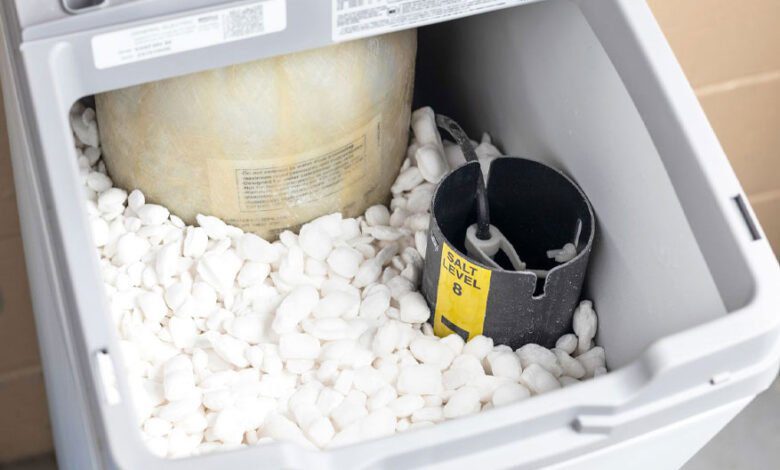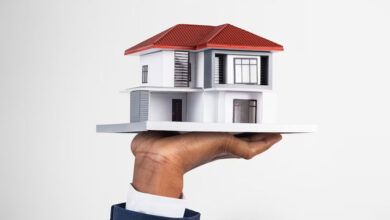The Complete Guide to Winterizing Your Water Softener

Winter maintenance is essential for keeping your water softener functioning properly throughout the colder months. From installing insulation to performing thorough draining and winterizing procedures, taking proactive steps now can help prevent headaches and costly repairs later on.
In this comprehensive guide, we’ll break down everything you need to know to effectively winterize your water softener. We’ll discuss the potential issues cold weather can cause, strategies for protecting your unit, recommended maintenance checklists, troubleshooting tips, and more. By following the best practices outlined here, you can feel confident your softener will operate smoothly all winter long.
Understanding How Water Softeners Work
Before diving into winterizing techniques, it’s helpful to understand the basic mechanics of a water softener. This household appliance removes calcium and magnesium—the “hardness” minerals—from your water supply.
Normally your home’s hard water contains these minerals which can negatively impact fixtures, appliances, and your family’s health over time. However, water softeners use a process called ion exchange to filter out the hard minerals.
Specifically, the softener contains resin beads coated with sodium ions. As the hard water passes through the resin bed, the calcium and magnesium ions latch onto the sodium ions while the sodium ions detach and take their place in the water. This essentially “soaks up” the hardness minerals and leaves you with softened, sodium-rich water.
Of course, cold weather poses unique challenges to this ion exchange process. That’s why ensuring your unit is properly maintained and protected over winter is so crucial.
Effects of Freezing Temperatures
The most significant danger cold weather poses is freezing. Water softeners rely on water flow to function, so any freezing or fracturing of internal plumbing from ice expansion can damage components or even rupture the unit.
Some potential issues caused by freezing include:
- Cracked Pipes/Valves – Frozen water trapped inside pipes or valves can cause them to burst under pressure as the water expands.
- Resin Bed Damage – If the water inside freezes while still saturated with hardness minerals, it can crack the resin beads used in ion exchange.
- Control Valve Malfunctions – Ice forming around internal valves and mechanisms restricts their movement, which may prevent regeneration cycles.
- Hose/Tube Breakage – External hoses and connecting tubes are especially vulnerable if they freeze with water still inside.
Beyond freezing issues, extreme cold can also affect the ion exchange process itself. Resin beads may lose efficiency at very low temperatures, and pump components may not function properly. So taking proper winterizing actions is crucial to prevent these temperature-related problems.
Key Steps for Draining and Winterizing
Preparing your water softener properly involves following a methodical, multi-step process to drain and protect it before the colder weather arrives. Here are the key actions to take:
- Bypass the unit. Put the water softener in bypass mode so untreated water can still flow to the home while you work.
- Move the control valve. Advance the control valve to the “backwash” position to remove any remaining water from the internal plumbing.
- Drain the brine tank. Carefully empty the remaining salt or potassium chloride from the brine tank.
- Disconnect hoses. Detach hoses connecting to the water supply and bypass lines, and drain any remaining water trapped inside.
- Blow out external plumbing. Use compressed air to clear any water trapped in external hose connections and attached tubing.
- Drain the control valve. Open the drain spigot at the bottom of the control valve to empty trapped water until dry.
- Remove power. Unplug the water softener or shut off its power supply to prevent accidental regeneration cycles.
Completing these careful draining procedures is essential for preventing damage from freezing or bursting pipes over winter. Storing disconnected hoses and keeping the system empty removes residual water that could freeze.
Insulating Your Outdoor Water Softener
For units located outdoors or in unheated spaces like garages, additional insulation is strongly recommended to protect components from extremely cold temperatures. Some insulation strategies include:
- Wrapping the unit. Use self-adhesive fiberglass insulation or waterproof bubble wrap to create an insulating barrier all the way around the softener tank and cabinetry.
- Creating an insulated box. Build or purchase a Styrofoam or weatherproof fiberglass insulation enclosure that completely surrounds the unit for maximum protection.
- Applying pipe insulation. Slide foam or fiberglass pipe insulation over any exposed plumbing connections to the unit to prevent heat loss.
- Sealing cracks. Caulk or expandable foam any openings or seams in the unit’s outer casing to prevent air gaps.
Insulation helps maintain an interior temperature just above freezing even when it’s much colder outside. This small amount of warmth can make a huge difference in preventing issues related to freezing pipes or components.
Protecting Indoor Units
While less vulnerable than outdoor setups, water softeners placed indoors still require some special precautions in areas like unheated basements, garages, or other uninsulated spaces:
- Monitor temperatures. Use a thermometer to ensure the space doesn’t drop below 40°F, as most units aren’t designed to operate below that threshold.
- Install a space heater. A small portable heater pointed towards the softener can help maintain a livable temperature in very cold, drafty areas if needed.
- Seal air leaks. Caulk or weatherstrip any exterior basement walls, doors, vents, or other gaps letting in cold air near the unit.
- Insulate exposed pipes. Fiberglass pipe insulation helps keep pipes from freezing even at sub-40°F basement temperatures.
While not as crucial as outdoor units, giving indoor softeners some extra warmth and protection ensures they’ll stay functioning reliably over winter.
Winter Maintenance Checklist
To thoroughly winterize your water softener, work through this comprehensive checklist step-by-step before the first hard freeze:
Draining and Winterizing
- Put unit in bypass mode
- Advance control valve to backwash
- Drain and empty brine tank
- Disconnect and drain external hoses/tubing
- Drain control valve
- Remove power/electricity
Insulation
- Wrap unit with insulation (if outdoor)
- Create insulated enclosure (if outdoor)
- Apply pipe insulation
- Seal cracks and openings
Storage and Protection
- Store hoses, disconnects in dry location
- Ensure control panel is dry and capped
- Inspect cabinet/seams for drafts or damage
- Seal or insulate vulnerable areas as needed
Startup Prep (Spring)
- Remove any insulation or enclosures
- Reconnect hoses and tubing
- Fill brine tank with salt/potassium chloride
- Restore electricity/power to unit
- Return control valve to normal operation
- Verify water flow and regeneration
Taking the time to methodically work through each area of this checklist will help catch any potential issues before winter strikes. Proper winterization forms the foundation for smooth, problem-free spring startup.
Common Winter Issues
No matter how thoroughly you prepare, some problems may still arise during colder months. Knowing what to watch out for can help with speedy troubleshooting:
- Frozen pipes – Signs include burst pipe(s), ponding water inside unit
- Tripped breaker – Reset breaker, address any melted insulation/sealing issues
- No flow/regeneration – Control valve mechanism may be frozen, use heat gun cautiously
- Salt locking – Drain brine tank, refill after thawing with hot water
- Low water pressure – May indicate supply line or filter screens are frozen
- Chemical smell – Odors from frozen plastic/rubber parts forming cracks
Other common culprits include cracked ion exchange resin beads from freezing saturated with minerals, or malfunctioning recharge pump due to freezing or cold temperatures. Having a maintenance pro evaluate is best for more serious issues.
Scheduling Professional Maintenance
While you can perform many winterization tasks yourself, it’s still highly recommended to arrange for a professional water softener technician to inspect your unit before the season changes. Here are some key benefits:
- Expert evaluation – A technician can thoroughly check components for wear/damage issues.
- Repairs or replacements – Any minor repairs or part replacements needed are handled promptly.
- Guidance on winterization – Technicians provide customized advice for your specific unit and location.
- Winter safety checks – Flow controls, backflow preventers and other devices impacting water safety are inspected.
- Spring startup assistance – Scheduling spring startup help ensures a smoother transition when water use resumes.
Professional winter checkups avoid unpleasant surprises later by catching small problems before they worsen. The minimal investment gives you peace of mind your softener is fully prepared to withstand the rigors of winter.
Monitoring Your Softener
Even with thorough seasonal prep work, it’s still wise to periodically check your water softener over the winter months:
- Inspect insulation – Make sure insulation barriers are intact and no cracks have developed.
- Test temperatures – Use a thermometer to verify the space remains adequately heated above freezing.
- Look for leaks – Check around exterior plumbing and inside the storage cabinet for signs of dampness or ponding water.
- Listen for noises – Unusual vibrations, knocking sounds could indicate a freezing issue inside the unit.
- Confirm bypass mode – Verify the control valve is still securely locked in bypass to prevent regeneration.
Paying attention helps catch minor issues before they worsen. A frozen water line may still form with extended below-freezing spells, so monitoring averts dangerous equipment damage.
Safely Thawing a Frozen Softener
Despite diligent winterizing, hard freezes may still cause temporary freezing within your softener. Here are a few tips for safely thawing it out:
- Locate the frozen area using a thermometer – pipes, control valve, etc.
- Apply gradual, indirect heat like a room heater—avoid open flames or immersion heating near plastic/rubber.
- Starting at the coldest areas, use a heat gun or hair dryer on lowest setting 18+” away.
- Alternatively, try running warm water through an outside hose into the unit once partially thawed.
- Avoid abrupt temperature changes to prevent stress cracks. Thaw slowly over several hours if needed.
- Inspect for damage once fully thawed. Contact a technician for serious issues like cracked pipes.
Patience is key – rushing the process risks permanent damage. Allow ample time for the frozen areas to gradually return to liquid state to ensure safe thawing.
Dealing with Emergencies
Despite preparation, emergencies occasionally arise in extreme cold snaps, like busted supply lines or malfunctioning units. Here are steps to handle common water softener emergencies:
- Frozen pipes – Shut off water supply, apply heat gradually, and contact a plumber ASAP.
- No water flow – Check for frozen lines/components first. Then have a technician troubleshoot.
- Strange odors – Often indicate leaks or cracks developing. Call a technician immediately.
- Faulty unit – Switch to untreated water via bypass mode. Contact repair services right away.
- After-hours problems – Use emergency numbers for 24/7 plumbing or water specialists.
Being prepared with important contact info handy helps avoid costly or dangerous escalations in emergency situations over winter holidays and weekends when services may be limited. Doing your best to promptly address any significant problems is key.
Long-Term Maintenance Strategies
While winter preparations provide seasonal protection, ongoing maintenance forms the foundation for your softener’s long-term care and dependability:
- Inspect and replace worn-out components like O-rings and seals during annual service checks.
- Test resin beads regularly and refresh with a resin cleaner every 3-5 years for maximum efficiency.
- Follow the manufacturer’s recommendations for timely valve replacements, brine tank re-coating, and other component upgrades.
- Use high-quality salts, avoiding generic salts which can clog internal parts faster over time.
- Maintain consistent, recommended levels of salt/additive in the brine tank to prevent damage from improper concentration.
- Arrange annual maintenance inspections to catch small issues before they require major repairs or components need replacing.
Consistent, quality care through the lifespan of the unit pays dividends in years of trouble-free operation and lower long-term costs versus deferrable maintenance issues deteriorating untreated.
Benefits of Investing in Winter Maintenance
While the upfront time and money required for thorough seasonal preparation may seem like a hassle, proper winterization provides immense long-term benefits:
- Prolongs equipment lifespan – Preventing freezing damage means your softener components will last longer.
- Avoids costly repairs – Freezing issues are among the most expensive problems to repair on a water softener system.
- Maintains water quality – With no interruptions in softening, you enjoy fully softened water year-round.
- Protects plumbing infrastructure – Freeze damage to pipes is prevented, saving money on future plumbing repairs down the line.
- Assures functional operation – By spending an afternoon winterizing, you know your softener will work reliably all winter without issues.
The relatively minor seasonal investment leads to immense savings versus potential emergency repairs, replacement costs for damaged equipment, and household inconveniences from a non-functioning softener over winter months. Doing it right pays off.
Conclusion
With proper maintenance and winterization practices, having a reliably performing water softener system is well within your control throughout the winter months. Following the detailed guidance in this guide empowers you to successfully prepare your softener through thorough draining, insulation precautions, and ongoing monitoring.
Taking a few afternoons to methodically work through each step ensures your softener is protected from the effects of freezing temperatures and extreme cold weather. This diligent preventive care efficiently avoids expensive problems down the road. And with your softener safely cared for, you’ll enjoy fully softened water without interruption or hassles all season long. Implement these best practices and your softener issues will stay melted away!



